Lag lag lag, cute buzzword
stupid, stupid, stupid....You
Lag lag lag, cute buzzword
Buy organic from a local farm market, problem solved.
stupid, stupid, stupid....You
Yes it does. Your statement is below. You said many cases are still active which implies the jury is sill out. You also statedNo, we all know the virus has significantly less effect on younger people, but that doesn't say anything about my point regarding current Florida data.
As I note above I think you need to consider that many of the recent cases, which we are hearing are predominantly young folk, are still active.
Of course they are - people who don't see this are ignoring the science - plus this was a weekend when reports tend to diminish and a holiday weekend to boot. They likely won't go up as much, per capita as they did in NY/NJ for reasons I've outlined multiple times, but they'll very likely go up substantially from where they are now by the end of this coming week in places like FL, TX, GA, CA, and AZ. If they don't start going up significantly by about 7/13, which is about 4 weeks after most of these states started seeing rapid case acceleration (around 6/15), we can all celebrate a little bit and then try to figure out why.Deaths are a lagging indicator. That's how it works when cases are increasing or decreasing.
Cases - Hospitalizations - ICU - Deaths.
Common sense is not your strong point.
Doubtful. The data proves otherwise. Younger folks are much less seriously impacted by corona. This is not going to change. Gottlieb's predicted is dubious, unless some of these new cases are with the older demo.So with Gottlieb’s suspected increase in deaths soon in Florida ... it sounds like a number of those deaths will be younger folks... if the reports are correct regarding the infection rates over the past several weeks were mainly under age 50 .
Nope, never once had an issue, but stopped washing fruits/vegetables with soap/water at least a month ago, based on data that made it clearer that fomite transmissions were very very low (just rinse with water now, like we always have, since one can't be too sure about fresh foods).I wash fruit also with water. That's standard. It some peeps here were washing with soap and water and I'm assuming they had a bad case of loose stool because of it.
New Jersey is doing it the right the way. Amazing that the most densely populated state is the only state in the green.
So with Gottlieb’s suspected increase in deaths soon in Florida ... it sounds like a number of those deaths will be younger folks... if the reports are correct regarding the infection rates over the past several weeks were mainly under age 50 .
Now post how many deaths each state has had. Are we still one of the highest in the world?
It’s not a tweet...it’s sadly true...and factual...now that could change but those totals are undeniable.That poster is cherry picking tweets. I can find tweets from other blue check mark dweebs that are saying 45M people have had COVID in America.
I think the reason a state like NJ or NY had high numbers is obvious...the most densely populated states and the high reliance on public transportation...trains, path, subways and buses. It demands a higher level of precaution because the possibility of spread is much greater..
No comparison to most other states.
Lag lag lag, cute buzzword
Hey I hope your right but if the vast majority of ill folks with COVID are under 50 and old farts like me are not infected or maintain safety ....those deaths are coming from the younger population.... though I hesitate to believe him totally and his statistical data...Doubtful. The data proves otherwise. Younger folks are much less seriously impacted by corona. This is not going to change. Gottlieb's predicted is dubious, unless some of these new cases are with the older demo.
That poster is cherry picking tweets. I can find tweets from other blue check mark dweebs that are saying 45M people have had COVID in America.
The silver lining is this:
Hospitalizations seem to lag a week behind cases. The daily cases MA went up 5X from June 2 to June 24. The daily hospitalizations MA from 6/9 to 7/1 only doubled. People are not getting as sick right now. compared to just a month ago. In April/May the daily hospitalization rate a week after cases was over 20% and today it is around 5%.
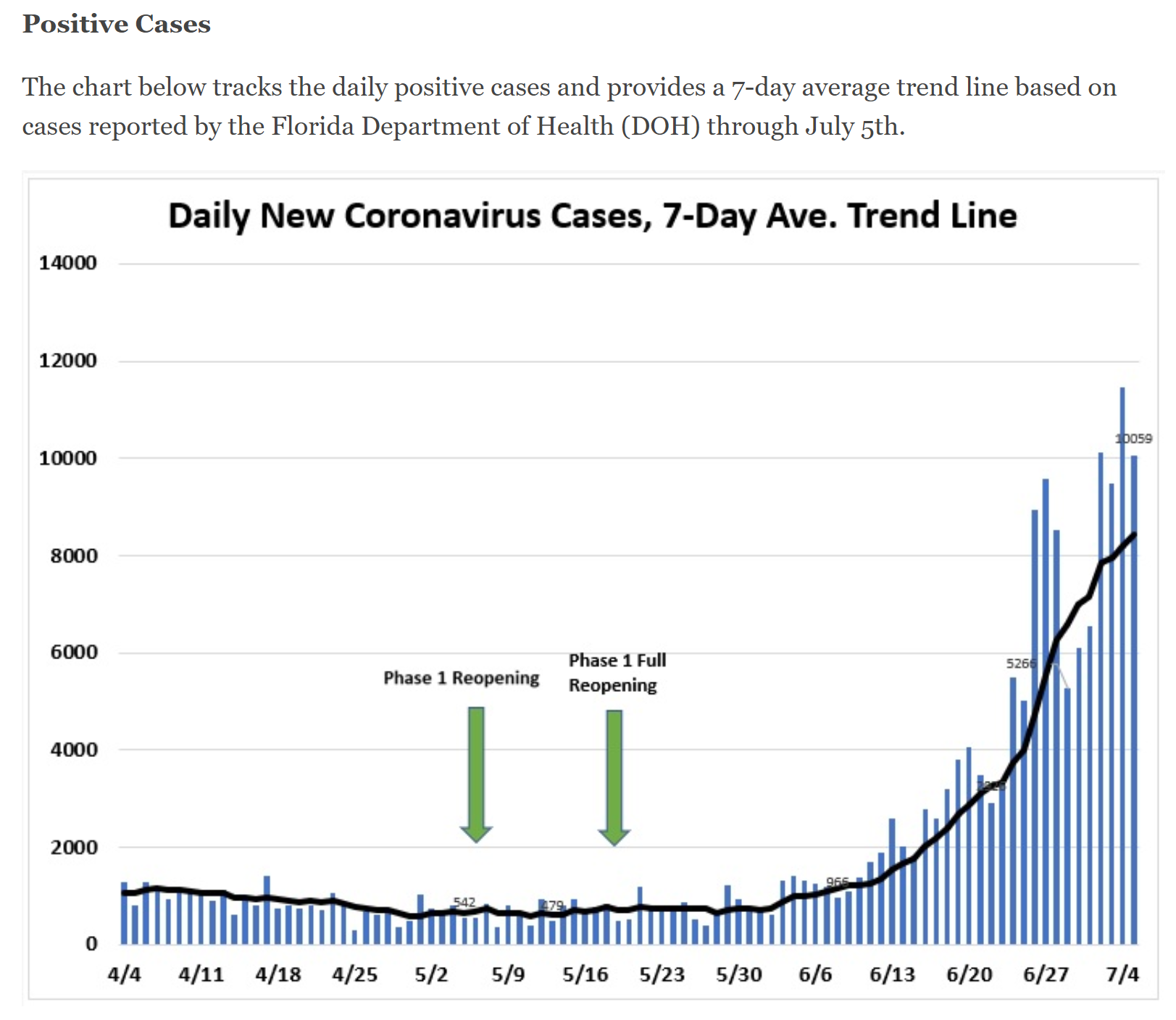
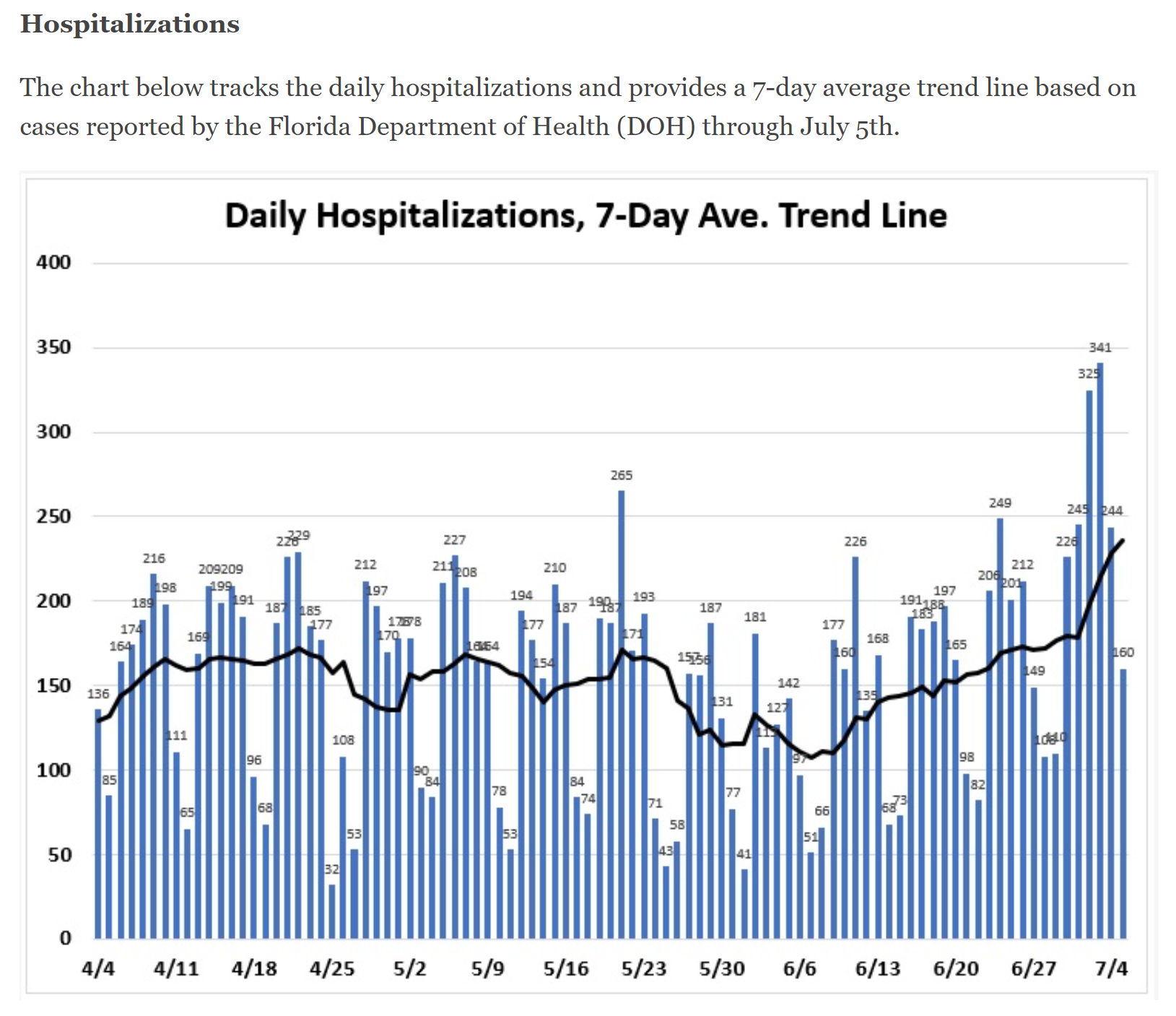
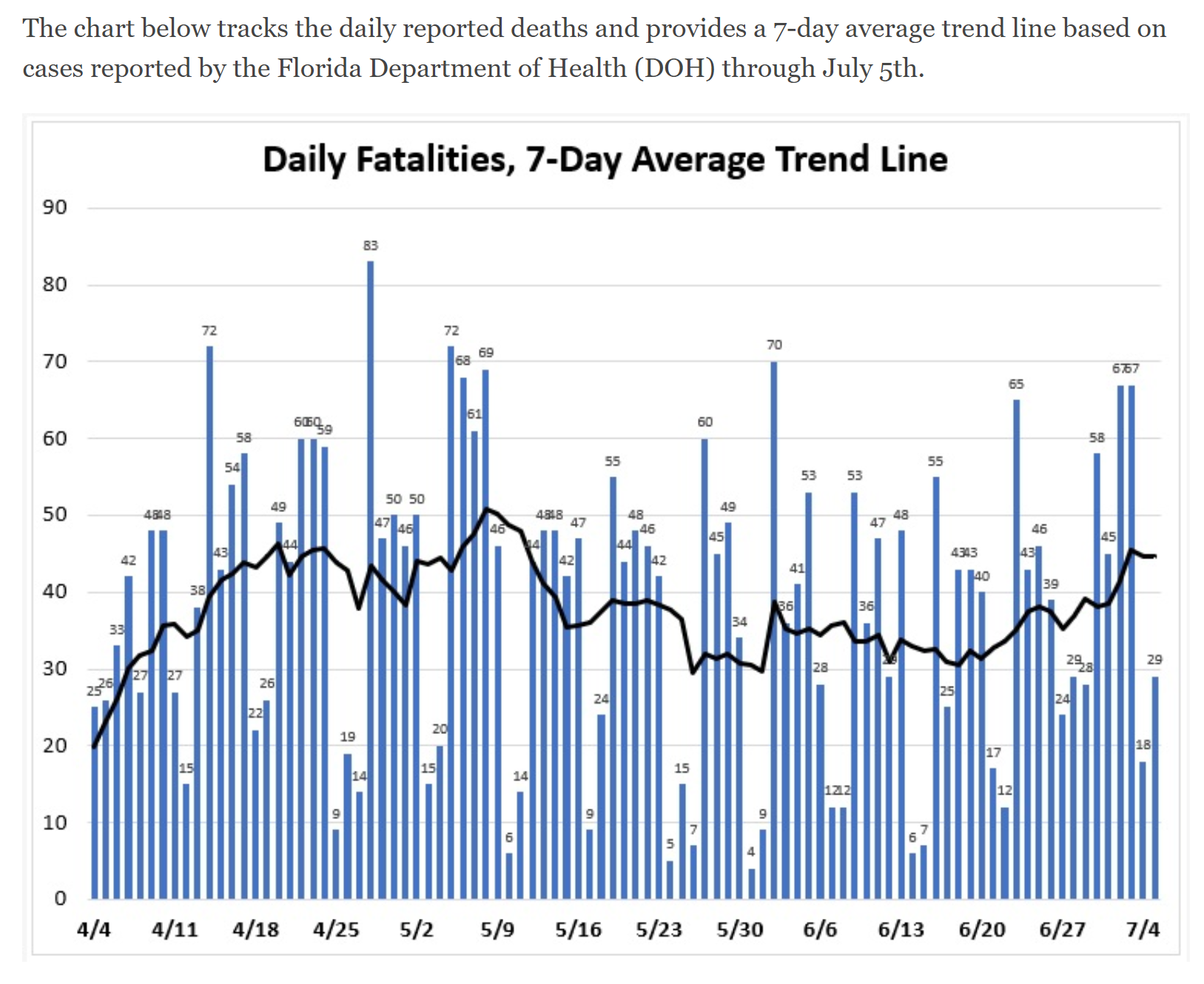
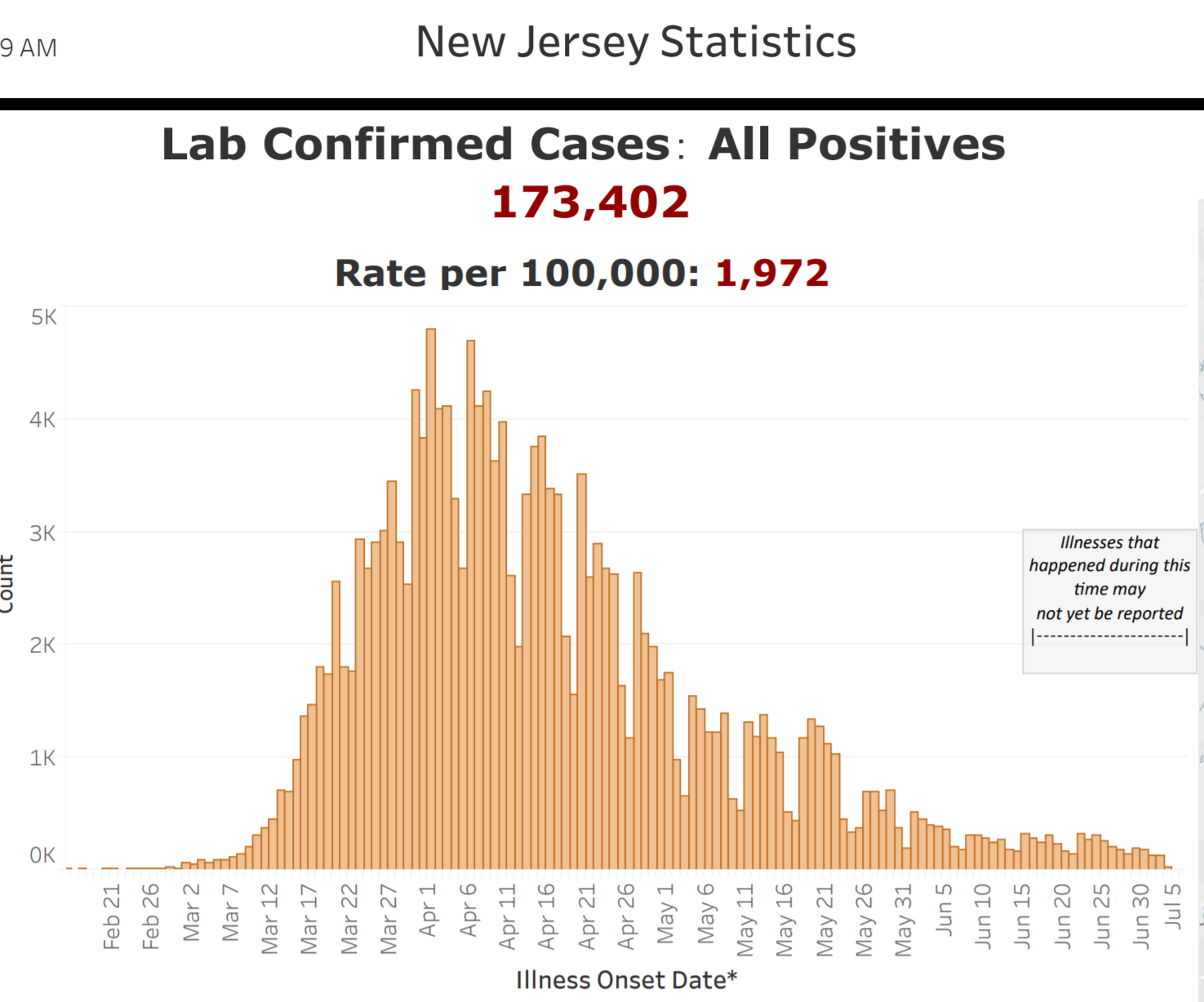
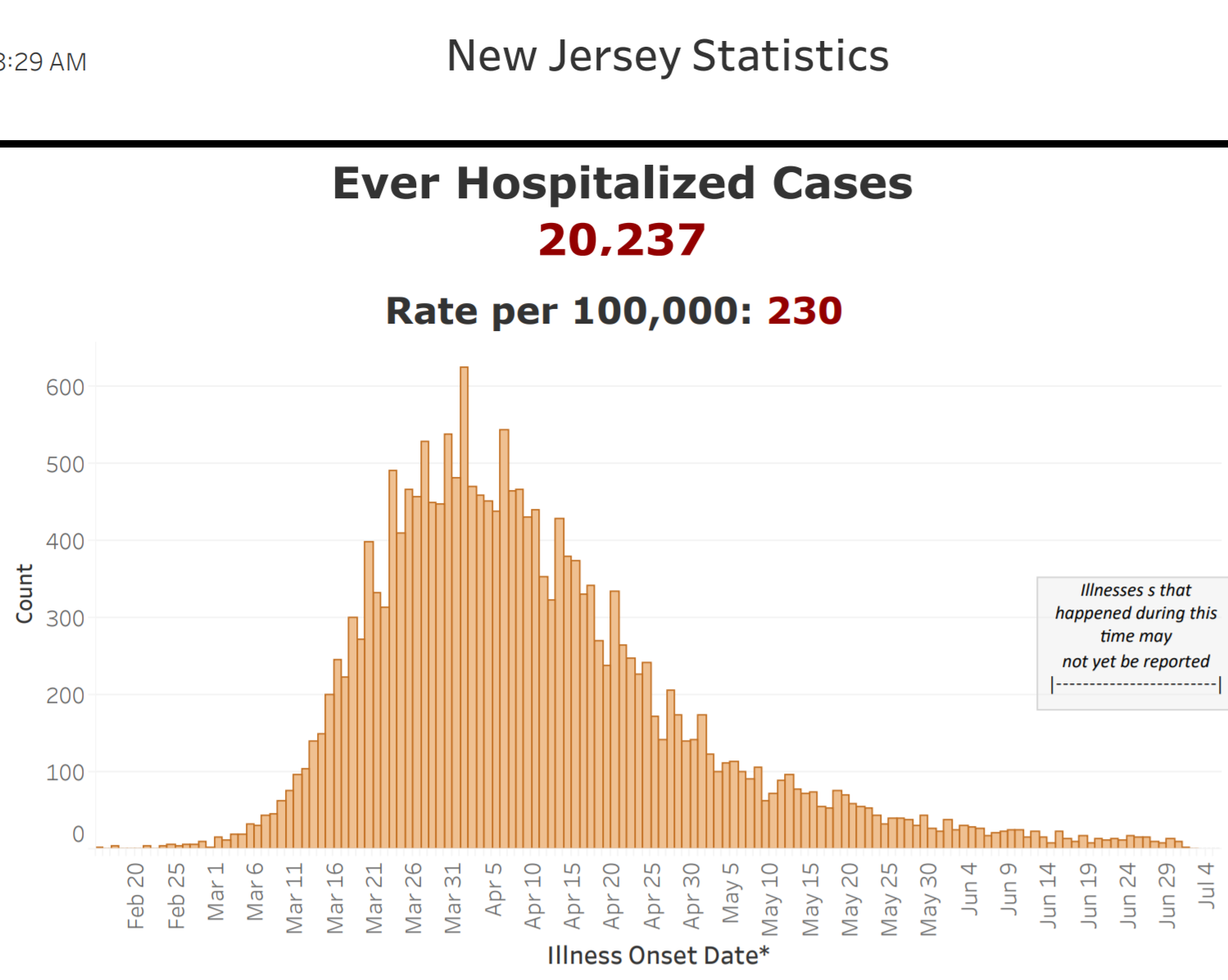
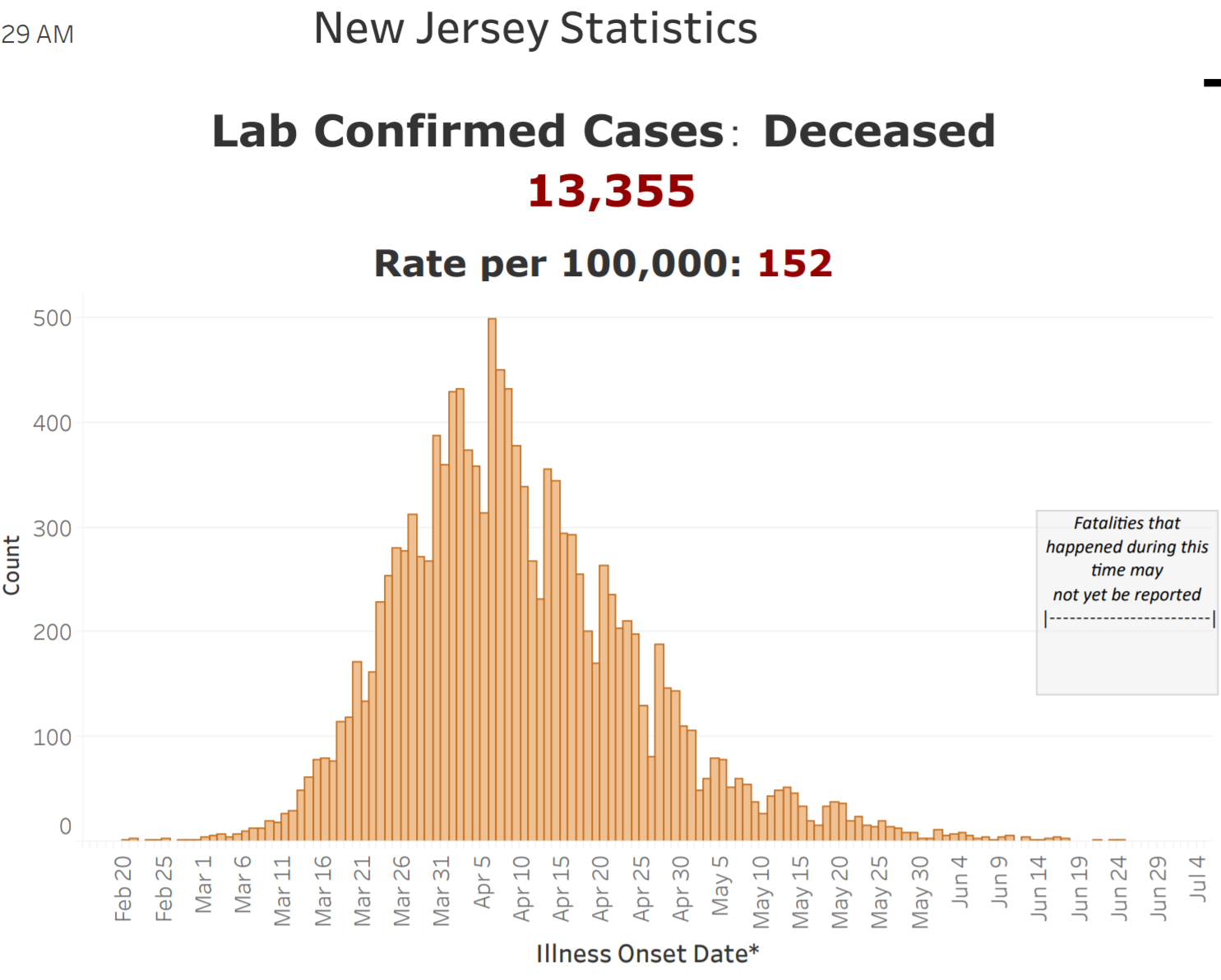
I think the reason a state like NJ or NY had high numbers is obvious...the most densely populated states and the high reliance on public transportation...trains, path, subways and buses. It demands a higher level of precaution because the possibility of spread is much greater..
No comparison to most other states.
Florida’s mortality figure on Sunday, while seemingly low at 29, actually is the deadliest Sunday the State has seen during the crisis:
March 15- 1
March 22- 1
March 29- 4
April 5- 26
April 12- 15
April 19- 26
April 26- 19
May 3- 15
May 10- 5
May 17- 8
May 24- 4
May 31- 5
June 7- 12
June 14- 6
June 21- 17
June 28- 27
July 5- 29
Another reason is that more younger people live with their parent in the Northeast due to the cost of living.I think the reason a state like NJ or NY had high numbers is obvious...the most densely populated states and the high reliance on public transportation...trains, path, subways and buses. It demands a higher level of precaution because the possibility of spread is much greater..
No comparison to most other states.
I would not believe him.Hey I hope your right but if the vast majority of ill folks with COVID are under 50 and old farts like me are not infected or maintain safety ....those deaths are coming from the younger population.... though I hesitate to believe him totally and his statistical data...
Do you have a link to the CDC saying that? I just got done arguing with a complete moron about the IFR. Normally I laugh and move on but his spreading of medical misinformation needed correction. He was telling everyone who would listen that the IFR is 4.9% in this country and kept providing links from the CDC and Johns Hopkins to prove his point except that these were confirmed positive cases only. He couldn't understand the simple point I was trying to explain to him that the number unreported asymptomatic cases drives the IFR down to .3-1.0% I cited NYC's random antibody testing results that RU#'s has posted here several times to illustrate my point...but to no avail.I would not believe him.
Here in NJ, 618 confirmed deaths were in people under 50 out of a total of 13355 deaths. In fact the vast majority of deaths are in people 65+ (10625 of 13355) despite them comprising less than 25% of the infections. The CFR for the Age Group 80+ is 36% (6317/17533) and for 65-79 it is 17% (4308/24711). For comparison, in young people 18-29 the CFR is 0.2% (52/22988).
The CDC recently said their data suggests that the number of actual infections is roughly 10X the number of confirmed cases. That would estimate the IFR for people under 50 as about 0.075% (618/(82,500 X 10)).
Just try to explain the difference between CFR and IFR (I’m sure you have already, but it’s wildly simple so I’m not sure how someone wouldn’t be able to understand it). If he doesn’t get it within a minute just move on.Do you have a link to the CDC saying that? I just got done arguing with a complete moron about the IFR. Normally I laugh and move on but his spreading of medical misinformation needed correction. He was telling everyone who would listen that the IFR is 4.9% in this country and kept providing links from the CDC and Johns Hopkins to prove his point except that these were confirmed positive cases only. He couldn't understand the simple point I was trying to explain to him that the number unreported asymptomatic cases drives the IFR down to .3-1.0% I cited NYC's random antibody testing results that RU#'s has posted here several times to illustrate my point...but to no avail.
If he doesn't get it within a minute, something else is at play (agenda or CL). The data has been very clear on age and risk factors for a long time.Just try to explain the difference between CFR and IFR (I’m sure you have already, but it’s wildly simple so I’m not sure how someone wouldn’t be able to understand it). If he doesn’t get it within a minute just move on.
Do you have a link to the CDC saying that? I just got done arguing with a complete moron about the IFR. Normally I laugh and move on but his spreading of medical misinformation needed correction. He was telling everyone who would listen that the IFR is 4.9% in this country and kept providing links from the CDC and Johns Hopkins to prove his point except that these were confirmed positive cases only. He couldn't understand the simple point I was trying to explain to him that the number unreported asymptomatic cases drives the IFR down to .3-1.0% I cited NYC's random antibody testing results that RU#'s has posted here several times to illustrate my point...but to no avail.
Martensen touched on this. Basically, you really don’t wanna get this thing, even if you survive it. That should be more common knowledge.https://www.boston.com/news/health/2020/07/01/covid-autopsies
Just received this from my daughter, an NYC Covid nurse who has seen it all on the front lines. Just curious if the RU brain trust ( of whom I have grown to respect more than the news) have any commentary one way or the other.
Florida’s mortality figure on Sunday, while seemingly low at 29, actually is the deadliest Sunday the State has seen during the crisis:
March 15- 1
March 22- 1
March 29- 4
April 5- 26
April 12- 15
April 19- 26
April 26- 19
May 3- 15
May 10- 5
May 17- 8
May 24- 4
May 31- 5
June 7- 12
June 14- 6
June 21- 17
June 28- 27
July 5- 29
I read this as a data point that cold lead to breakthroughs in treatment.Martensen touched on this. Basically, you really don’t wanna get this thing, even if you survive it. That should be more common knowledge.